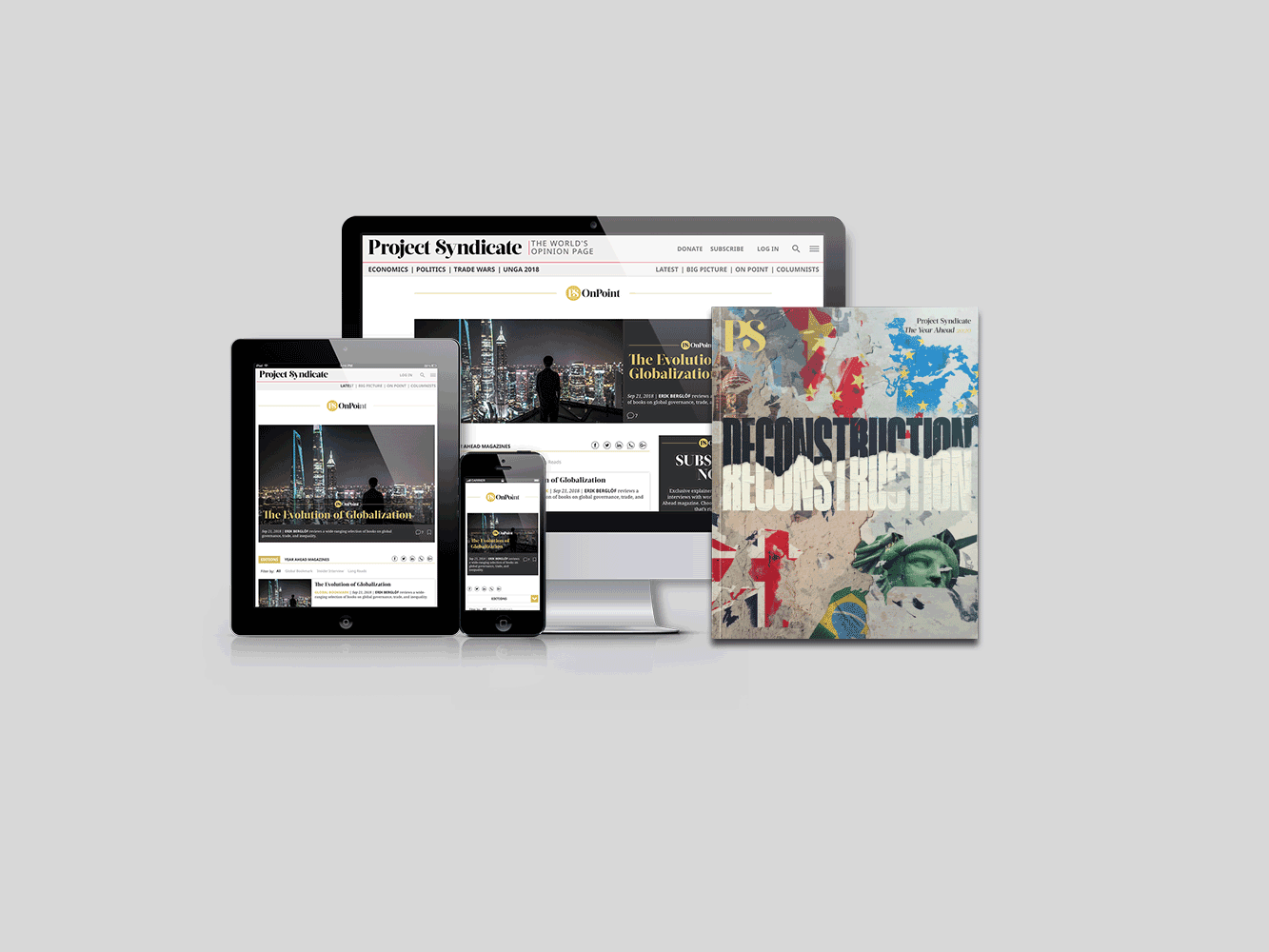HONG KONG – China’s leaders are currently putting the finishing touches on the country’s 14th Five-Year Plan, which will cover the 2021-25 period. But one aspect of the plan – the so-called dual-circulation strategy – is already attracting the world’s attention. Many fear that China is “turning inward” just when the global economy is staring down the barrel of a recession. These fears are misplaced.
According to President Xi Jinping, the dual-circulation strategy means that China will rely mainly on “internal circulation” – the domestic cycle of production, distribution, and consumption – for its long-term development. This will reduce China’s dependence on overseas markets and technology.
But that doesn’t mean China is withdrawing from the world. To understand what it does mean, one must first comprehend how Chinese policymakers think about the country’s long-term development trajectory.
Unlike Western leaders, who typically have degrees in law or economics, Chinese policymakers are mostly scientists and engineers. As a result, they are more likely to think in systemic terms. China’s Five-Year Plans are crammed with engineering and systemic terms, such as “top-down architectural design,” networks, platforms, and processes. This approach means that Chinese policymakers look beyond mainstream micro- and macroeconomic models to account also for meta- and meso-considerations.
At the meta- level, Chinese policymakers are dealing with what the father of the country’s nuclear program, Qian Xuesen, called an “open complex giant system.” As Qian and his co-authors noted, one cannot expect to manage such a system using “exact science,” with its underlying reductionism. Instead, they should engage in “meta-synthetic engineering from the qualitative to the quantitative” – that is, a process of qualitative analysis followed by rigorous testing against empirical facts.
Deng Xiaoping summed up this approach with his axiom, “crossing the river by feeling the stones.” Decades later, Nobel laureate Robert Shiller would take this concept further, showing how qualitative factors, such as popular stories, influence complex systems and are therefore essential to enable us to explain outcomes accurately.

Subscribe to Project Syndicate
Enjoy unlimited access to the ideas and opinions of the world's leading thinkers, including weekly long reads, book reviews, and interviews; The Year Ahead annual print magazine; the complete PS archive; and more – All for less than $9 a month.
At the meso- or institutional level, the dual-circulation strategy evolved out of the “circular economy” model – a systemic approach to reducing consumption and waste, thereby enabling natural-resource regeneration. The dual-circulation model is built on the recognition, derived from decades of manufacturing the world’s goods, that supply chains operate through multiple cyclical production, distribution, and innovation processes that are endogenously self-coordinating and synchronizing.
When these processes, cycles, and feedback loops do not synchronize well with government policies and procedures – say, because taxes or bureaucratic barriers are too high – supply chains stall. The dual-circulation strategy aims to avoid such obstruction, by applying flexible, adaptive, institutional, and structural approaches.
Focusing on internal systems is crucial to this objective, not least because of increasing macroeconomic disturbances. For starters, the COVID-19 pandemic has highlighted just how vulnerable our “just-in-time” global supply chains are to disruption, fueling calls for “deglobalization.”
At the same time, tensions with the United States – China’s largest trade partner – are escalating, exemplified by recent moves by President Donald Trump’s administration to cripple the operation of the popular Chinese-owned mobile apps WeChat and TikTok in the US. Economic decoupling now seems likelier than ever.
China’s dual-circulation strategy is a pragmatic response to the rapidly changing internal and external pressures the country faces. Policymakers’ goal is to boost supply-chain and market resiliency by leveraging China’s massive population of 1.4 billion – including 400 million middle-class consumers.
This brings us to micro-level considerations. Given China’s meritocratic system, one generally reaches the highest levels of policymaking only after working at the development “frontlines”: directly managing the construction of physical and social infrastructure in villages, cities, and provinces. This instills in Chinese leaders an awareness of people’s needs and the dynamics of social and economic engineering that never dissipates.
Today, most Chinese enterprises, as well as local governments, are struggling to adjust to fast-changing domestic and international market conditions. The dual-circulation strategy will help, by creating freer and more unified national markets for physical, financial, and human capital, products and services, technology, and information. It will also ensure that all of the system’s stakeholders know what to expect.
But strengthening internal production and consumption cycles does not mean destroying external trade, investment, tourism, and education networks; on the contrary, China is set to continue opening up its economy, especially its financial market. Rather, dual circulation means that external exchanges will be expanded and deepened in ways that complement the domestic economy.
If the rest of the world wants to cooperate in such ways – say, on developing green products and services – China will oblige. If it doesn’t, China will rely on its own formidable strengths, from a large consumer base to fast-growing innovative capabilities, to sustain its growth and development. Simply put, if the world is not ready for cooperation, China will adapt to polarization.
From Made in China 2025 to the Belt and Road Initiative, the world has often misinterpreted pragmatic or strategic Chinese policies and projects as devious or destructive schemes. But China can’t control how others interpret its actions, and it will not change its policies to appease its critics. With China poised to be the only major economy to record positive growth in 2020 and 2021, according to International Monetary Fund forecasts, there is no reason why it should.
"plan" - Google News
September 28, 2020 at 03:21PM
https://ift.tt/30amc0g
Making Sense of China's New Plan by Andrew Sheng & Xiao Geng - Project Syndicate
"plan" - Google News
https://ift.tt/2un5VYV
Shoes Man Tutorial
Pos News Update
Meme Update
Korean Entertainment News
Japan News Update
Bagikan Berita Ini














0 Response to "Making Sense of China's New Plan by Andrew Sheng & Xiao Geng - Project Syndicate"
Post a Comment